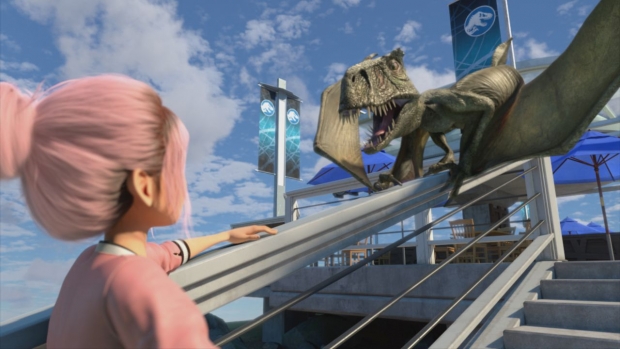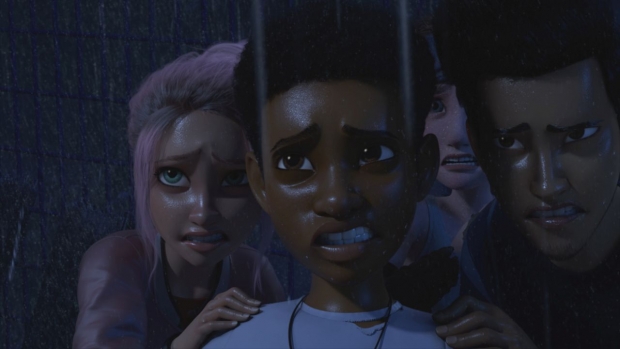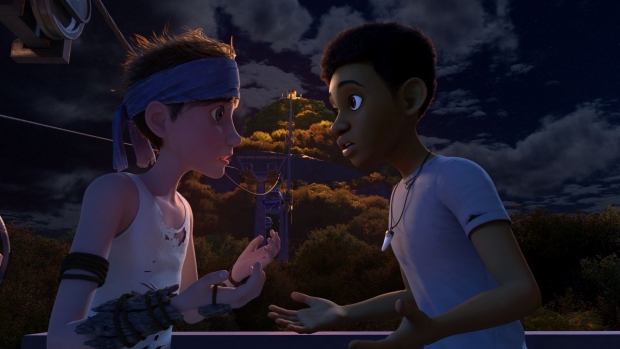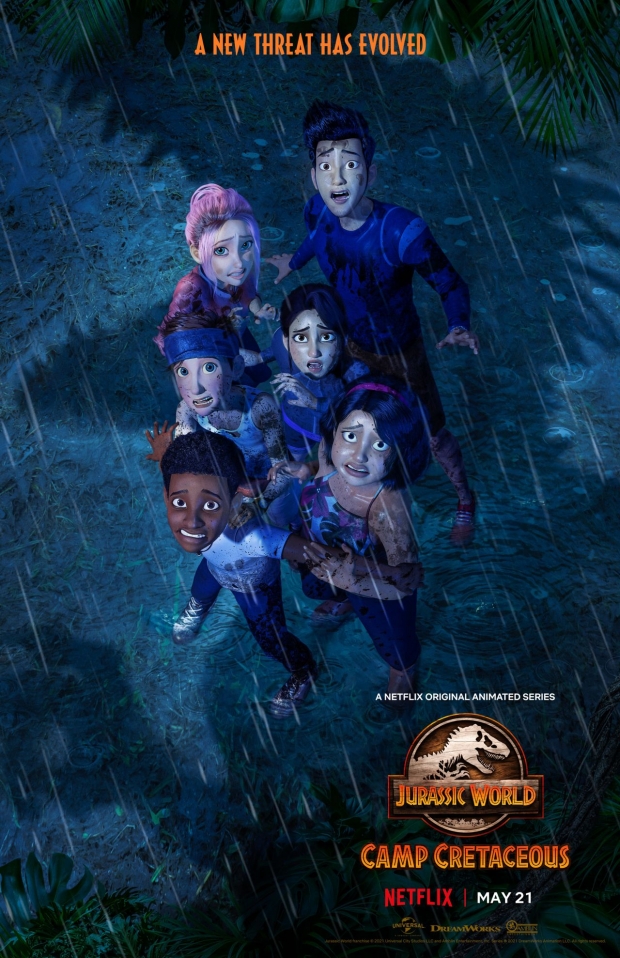Sensing no one is coming to their rescue, the stranded Isla Nublar campers plot their escape in the face of vicious new threats as well as their own personal demons; new season of DreamWorks Animation’s Annie Award-winning series debuts May 21 on Netflix.
From blood-thirsty dino hybrids like the Indominus Rex to equally hunt-hungry human dinosaur poachers, the intrepid kids of DreamWorks Animation’s Jurassic World: Camp Cretaceous have endured more than their fair share of trauma all over Isla Nublar. And, of course, in Season 3, which releases this Friday, May 21, on Netflix, even more turmoil awaits our young survivalists.
The new season of Zack Stentz’s Annie Award-winning series finds the campers nearly half a year into their unfortunate stay on the island, now well-experienced at living alone in the jungle amidst their friendly and unfriendly prehistoric neighbors.
But now, they’re plotting their escape.
“Season 1 was basically about these kids running for their lives,” says executive producer Scott Kreamer. “And Season 2 was about them waiting for rescue. In Season 3, more time has passed, and they’re done waiting for people to rescue them. They’ve decided this is something they’re going to do themselves.”
On top of battling pterodactyls with hang gliders, briefly lounging in the lap of luxury at Kenji’s penthouse, captaining escape rafts, and facing yet another new experimental, toothy threat, the kids also head back to where it all began - not their base camp in Jurassic World, but John Hammond’s original madhouse, Jurassic Park.
For Kreamer, it was a dream getting to revisit and animate the famous Jurassic Park entry way and glass dome, and even recreate the raptor-stalking kitchen scene; the Camp Cretaceous gang hides behind metallic tables and gas burners as scaly carnivores rattle doorknobs, bare their teeth, and snort hot breaths against windows, taking viewers back to Tim and Lex’s original terror.
“We’re a crew of fans, so it was pretty awesome,” he says. “It's what you hope you get to do when you’re on a project like this, animating those iconic sets and scenes. And Leo [Birenberg], our composer, definitely got to do more of the score from that original film. It’s always been the goal for this show to feel like we're part of the same universe and not some kind of kiddy TV spin-off.”
But as much fun as Kreamer says he and the team had weaving nostalgia for Steven Spielberg’s iconic saga into their show, the producer notes this was also the most emotionally taxing season yet. “These characters have been growing together, but also as individuals,” he notes. “They’ve seen death, and Ben’s time alone in the jungle with Bumpy has changed him, which has an impact on his relationship with the group. Darius is the leader, but that doesn’t mean everyone is going to agree with him or do what he says, and that’s something he has to deal with. Sammy also still doesn't know what happened to her family back home. They're dealing with a lot of stuff.”
He adds, “They've been stuck on this island together, like in quarantine, with the same people, day in and day out, and it starts getting to them. And, you know, things aren't all rosy.”
As Darius struggles coming to terms with not being able to always solve everyone’s problems -only worsened by Ben’s disinterest in being a team player - Kenji’s weighed down by a lack of self-confidence and self-worth. Not to mention everyone seems to have newfound apprehensions about leaving the island, some bound by a sense of duty to the animals, others out of fear of what their lives will be when they return home.
And watching these kids each go through their own existential crises, Kreamer shares, was even hard on the team. “I give a lot of the credit to our amazing writers for creating characters who we care about and, thankfully, who the audience cares about too,” he says. “Then you see the care and time the artists and directors and everyone else puts into it. We're all really invested in these kids, but we can't make it easy on them, obviously. So, there are times when the artists will read the script and jokingly, they’ll give the writers a ‘How could you do this? These poor kids!’”
Kreamer also says it was intentional that as these characters dive more into their own psyches, the animation and visuals get much more somber. “Things are definitely dark this season, and the color palettes and moodiness of the show reflect that,” he reveals. Season 3 is filled with dark tunnels, garages, elevator shafts, and frightening lightning storms rather than the bioluminescent caves, open fields, and park strip malls from previous seasons. “Our animators have also had more time with these characters on a technical level, so the visual acting is even better this season than it has been before. And that goes for the dinosaurs as well as our kids. We're always trying to get it as close to real as we possibly can.”
The attention paid to small visuals – arguably minor details like Brooklyn’s hair roots growing out and the gradually worsening state of the kids’ clothes with frays and stains - adds to the heightened emotion by conveying a sense of aging and maturity in the characters, and a realism rarely seen in other animated shows. “Those things have become incredibly difficult to track over so many episodes, but it’s worth it because you normally don’t get this in animation,” Kreamer notes. “Bart Simpson has been wearing the same outfit since 1989. So, really early on, we started talking about what the characters would look like after they’ve been on the island for five or six months. That took a lot of planning and a lot of people tracking things like, ‘Even though the characters are dirty in this shot, now that they've been in the water, are their shirts and skin clean now? Is there dirt left in certain places?’”
He continues, “I get why people don't do that more often in animation, but it adds realism. And from the start we’ve been going with the idea that the devil is in the details.”
And it’s those details, Kreamer believes, that add to the relatability of the characters and allow for strong bonds between characters and fans. “When I took this job, I was like, ‘Certain people are going to tune in for the dinosaurs, but if we're going to hook an audience, for any amount of time, you have to want to root for these kids,’” he says. “You have to live and die with them. You have to want to see what they come up against and what they do about it. Luckily, we have a group of campers that people have bought into and we're all in with them.”
In expanding an already large and well-known franchise, it would be understandable to assume that all avenues of stories about running scared from genetically engineered dinosaurs have been exhausted. But, because of these kids, their psychological as well as physical struggles, their fights with inner demons as well as the 12-foot-tall ones lurking among the trees, Kreamer and the rest of the Camp Cretaceous creative team have managed to captivate audiences for three seasons. And hopefully more.
“These are smart kids and they've got good hearts and good intentions, and things don't always work out with those intentions as we'd like them to,” says Kreamer. “But they don't quit. You want to see them struggle, but you want to see them rise to the occasion, and they always do. No matter what we’ve thrown at them, they don't quit. They just keep fighting and it’s one of the main reasons I really love this season.”












